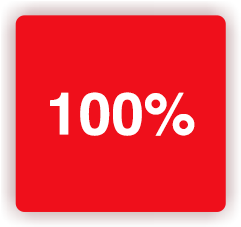
Who doesn’t feel exhilarated at the thought of a great massage? They offer a range of pleasurable sensations stemming from both physical and psychological effects.
They can reduce stress, alleviate pain, and promote relaxation through the release of endorphins and other beneficial hormones.
John Rodriguez, CPT, LMT, a certified personal trainer and licensed massage therapist in Vero Beach, is trained in a range of massage modalities.
He says, “Regardless of what type of massage you’re considering – and there are many from which to choose – clients should always feel empowered to ask about the therapist’s background, credentials and continuing education.”
According to a survey by the American Massage Therapy Association, about 19 percent of US adults had at least one massage in 2023. Even more interesting is that some 23 percent of them get massages regularly. This shift seems to show that more people are recognizing the substantial health benefits of massage beyond just relaxation.
Rodriguez describes some of the most common types of massage:
“Swedish massage is one of the most common and widely known forms of massage. It involves long, flowing strokes, kneading, and gentle circular movements that focus on the superficial layers of muscle.
“It’s ideal for relaxation, improving circulation, and easing general tension and is a great starting point for anyone new to massage. No additional certifications are typically needed beyond standard licensure.”
WebMD adds that Swedish massage “may help reduce symptoms of depression, stress, and anxiety, as well as help in the management of back pains, headaches, muscle issues and other chronic pains.”
“During a hot stone massage, smooth, heated stones are placed on specific points of the body and may also be used by the therapist to massage the muscles” explains Rodriguez.
“The heat helps to deeply relax the muscles and increase circulation. This modality is especially helpful for those dealing with chronic stress, muscle tension, or who simply need deep relaxation.
Therapists should have training in hot stone techniques and heat safety.”
Healthline, a health and wellness information platform, adds that anyone who is experiencing muscle tension pain, insomnia, or stress may benefit from a hot stone massage.
Discussing deep tissue massage, Rodriguez says this technique targets the deeper layers of muscle and fascia through slow, deliberate strokes and firm pressure. “It’s particularly beneficial for people experiencing chronic muscle tension, postural imbalances, or recovering from injuries.
Because of the intensity, therapists should be trained specifically in deep tissue work and have a strong understanding of muscular anatomy.”
Aromatherapy massage blends gentle Swedish massage techniques with the use of essential oils.
Rodriguez said. “Different oils are selected based on the client’s goals: lavender for relaxation, peppermint for headaches, or eucalyptus for respiratory support, for example.
“It’s a calming, sensory experience beneficial for reducing stress and anxiety. While no special license is required, therapists should be knowledgeable about essential oils and their contraindications.”
Jade Shutes, founder of the School for Aromatic Studies, which offers professionally-designed aromatherapy educational programs, says, “Essential oils can be a powerful addition to massage therapy for stress, tension, anxiety, and pain. At this time, when so many people are suffering from anxiety, depression and stress, the integration of aromatics into your massage therapy practice can offer profound support.
Rodriguez explains that sports massage incorporates a variety of techniques – such as compression, stretching, and deep tissue – to support athletic performance, recovery and injury prevention. “It can be used pre- or post-competition, or during training. This massage is ideal for athletes or active individuals, and therapists working in this area often have advanced training specific to sports and movement therapy.”
Henry Ford Health, a comprehensive, integrated health system for more than a century, says that whether you’re a professional athlete or weekend warrior, you can enhance your athletic performance by incorporating sports massages into your wellness regime.
Rodriguez also explains some more specialized forms of massage.
“Prenatal massage is designed specifically for expectant mothers, using gentle techniques to alleviate pregnancy-related discomforts such as lower back pain, swelling and fatigue” says Rodriguez.
“Clients are typically positioned on their sides with supportive bolsters for safety and comfort. Therapists must be trained in prenatal massage and understand the physiological changes that occur during pregnancy.”
Lymphatic drainage massage is light and rhythmic, helping to move lymph fluid through the body to reduce swelling and aid in detoxification. “It’s especially useful post-surgery or for individuals with lymphedema or chronic inflammation. Therapists require specialized training in manual lymphatic drainage techniques to perform this modality effectively and safely,” Rodriguez says.
“Trigger point therapy involves applying focused pressure to knots or hyperirritable points in muscle tissue that often refer pain to other areas of the body. This technique is ideal for people experiencing headaches, repetitive stress injuries or localized chronic pain. It requires specific training in identifying and treating trigger points.”
“Reflexology applies pressure to specific points on the feet, hands, or ears that are believed to correspond with different organs and systems in the body,” Rodriguez explains. “Though not a full-body massage, it can be deeply relaxing and may help support overall balance and wellness.
Certification in reflexology is recommended as it is a specialized field distinct from general massage therapy.”
Cranial sacral therapy (CST) uses very light touch to release restrictions in the craniosacral system, which includes the membranes and cerebrospinal fluid surrounding the brain and spinal cord. “It is extremely gentle and often used to support the nervous system, relieve headaches, and assist in trauma recovery. Practitioners should have advanced CST training, says Rodriguez.
“Myofascial release involves applying gentle, sustained pressure to fascia – the connective tissue that surrounds muscles and organs – to release restrictions and improve mobility,” he explains.
“It’s particularly helpful for chronic pain, postural issues, and scar tissue. Therapists practicing this technique should have specialized training, such as in the Barnes method or similar systems.”
Therapeutic massage is a client-specific approach that blends multiple techniques such as deep tissue, myofascial release, trigger point therapy, and stretching.
Rodriguez says “it’s designed to address an individual’s unique concerns – whether that be chronic pain, injury rehabilitation, limited mobility, or stress.
“This modality is results-driven and often requires the therapist to have a strong background in anatomy, corrective movement, and integrative techniques. It’s intended for those who want more than a general relaxation experience.”
John Rodriguez, CPT, LMT, also holds certifications as an ISSA – International Sports Sciences Association – certified fitness coach, ISSA corrective movement specialist and fascia fitness coach. He works at Restorative Wellness Vero, located at 2239 14 Ave., Vero Beach. Call 772-579-6443 for information or an appointment.



